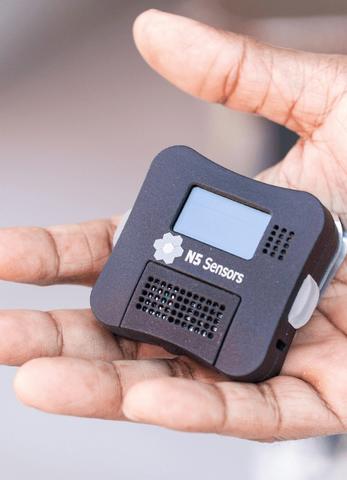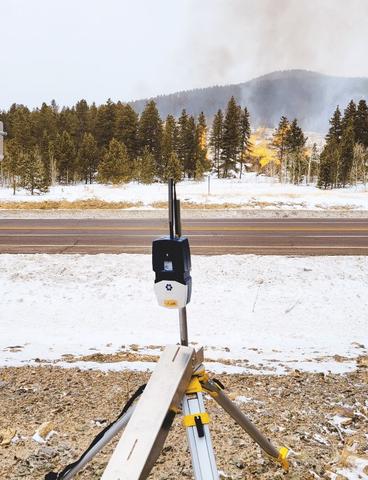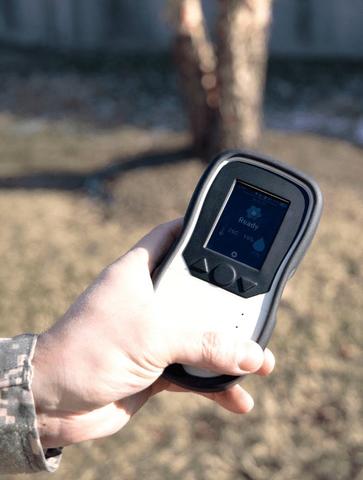
In the early 2000’s, Abhishek Motayed found his way to the NIST campus as a contractor, working in what became the Material Measurement Laboratory (MML). Within MML, Abhishek delved into the start of his federal research with the Functional Nanomaterials Group under the guidance of Albert Davydov. He spent his time setting up electronic property measurement capabilities for the group and finishing up his PhD.
Abhishek completed his PhD in electrical engineering and transitioned over to the NIST post-doctoral, guest research staff. His work shifted toward a focus on advanced sensors and nanotechnology. The program around this research grew from the ground up, papers were published, and patents were filed. Abhishek and his team carved the path for leading-edge, sensor technology.
“I have always loved physical science and sensors. The physical world as we know it needs to be measured by sensors, especially when it comes to understanding and improving it. I fully expect sensors to be at the forefront of next-generation technologies that are making our world a better place,” said Abhishek.
The foundation was built, but Abhishek wanted to tackle a new challenge in that of commercialization. It requires a mountain of effort to propel a technology to market, but he felt that he had the in-depth, subject matter expertise to transform the associated patents into products. Abhishek thought that this technology would greatly benefit society and felt that others might not appreciate the impact of the technology as much as the inventor himself. So, in 2012, Abhishek left NIST to become his own spokesperson and developed a start-up company, N5 Sensors, to license the technology. An inter-institutional agreement was soon formed, negotiated by the University of Maryland, leading to the intellectual property being owned by multiple hosts.
Abhishek knew that a start-up tech company required many levels of funding to succeed. As N5 Sensors began to grow from concept to a brick-and-mortar facility, Abhishek pursued all available avenues to ensure continued progress. Since he had previously worked at NIST, he was eligible to apply for the NIST-Science and Technology Entrepreneurship Program (N-STEP). N-STEP, a program that was developed through a NIST/TEDCO partnership, provides a funding platform for NIST alum who want to further pursue their translational research and the commercialization of NIST technologies.
As Kimberly Mozingo, TEDCO’s director of federal programs said, “N-STEP was a visionary idea from NIST that just keeps paying off. Companies that start through N-STEP are provided with a wealth of resources and support to help reduce the risks inherent in growing a business. In fact, as part of their application, they must state how they intend to grow their business literacy skills. Startups are risky and N-STEP goes a long way toward reducing risk – increasing the chances of success for NIST post docs and researchers.”
Abhishek felt like N-STEP was a great fit for his sensor-based technology as it would allow him to expand upon his business acumen and would provide him an additional funding channel, which was extremely critical in advancing the technology toward the commercialization stage. Being a first-time entrepreneur is quite challenging and commercializing a product is very difficult, especially with early validation and manufacturing.
“It’s important that you exhaust every resource available to you as you will need many layers of funding to get a product to the finish line. First, focus on local funding opportunities and move toward national funding opportunities. With local and regional funding, you can quickly meet people in the ecosystem and build your network so that when you aim for national funding, you will have already established contacts and resources. N-STEP was a great step to take along the path towards commercialization,” said Abhishek.
As N5 Sensors continued to grow, Abhishek decided to pivot the business from a focus on manufacturing sensors to a focus on solutions to better society by implementing their sensors into new technologies. Two major solutions were created out of the base technology:
Rugged, Networked Wildfire Detection and Air Quality Monitoring System

Wearable Chemical Threat Detection System for the Military and Emergency Responders

Abhishek plans to continue to expand and grow N5 Sensors by providing solutions for societal problems using cutting-edge technology. From concept to practical application, Abhishek has taken his technology from the drawing board to the manufacturing facility, showing that the commercialization journey doesn’t end once the lab coat is put away.
Go here to learn more about N-STEP.
Go here to learn more about N5 Sensors.
Go here to learn more about TEDCO.

